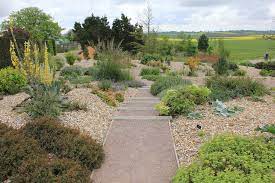
A gravel Garden
The Gravel Garden, was brought to public notice, by the wonderful gravel garden that Beth Chatto created out of the car park, of her garden in Essex. It has developed into a particular garden style, not only defined, by free draining soils and in full sun. But the radio plants to decorative mulch and rocks and stones. The plants tend to be more spaced and in small groups, so the individual habit can be enjoyed. The choose of mulching chippings is important, to frame the plants and large Peebles, rocks and stones can also be used, begging the question when is a gravel garden not a rock garden? Most gravel gardens tend to be flat or on slight slopes, with generous irregular shaped beds and winding paths, allowing self seeding to create the informality that is a hall-mark of a gravel garden. Here are some plants to consider.
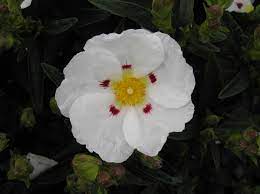
Cistus dansereaui ‘Decumbens’
Cistus dansercaui ‘Decumbens’: A good compact small cistus, with aromatic evergreen foliage. Wide flat open papery flowers, which are white with a big splash of red at the centre and golden stamens. Flowering June into July. Full sun.
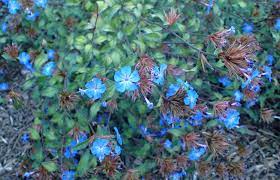
Ceratostigma willmottianum
Ceratostigma ‘Willmottianum’: A small open twiggy shrub, with stems that are red with small leaves that turn a rich red in autumn. Clusters of sky blue flowers with white centres are produced freely from late summer up to the first frost. Full sun
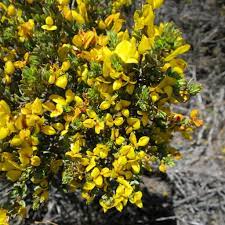
Ulex europaeus ‘Flore Pleno’
Ulex europaeus ‘Flore pleno’: A mound forming compact shrub with prickly evergreen foliage. Sweetly scented double flowers produced from April-May and into June. Full sun.
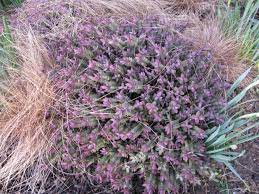
Hebe ‘Red Edge’
Hebe’ Red Edge’: A lovely densely mounding low hebe with dramatic evergreen sliver foliage which has winter tints of red and purple. The flowers are pretty insignificant and are small and white, if produced in mid summer. It is all about the foliage.
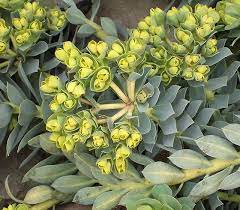
Euphorbia myrsinites
Euphorbia myrsinites: This is a very unusual looking plant, it creeps and crawls its way across the ground. It is evergreen, with pea-green stems with sparsely produced green glorious leaves and clusters of pea-green flowers in April. A must for the edge of the gravel garden. Full sun.
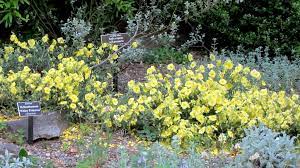
Heleanthemum ‘Wisley Primrose’
Helianthemum ‘Wisley Primrose’: No gravel garden would be complete with out a mound forming and spreading rock rose. This is a lovely sliver leaved variety with soft yellow flowers from mid to late summer. Full sun.
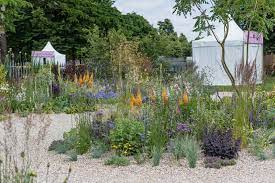
A very colourful gravel garden
Top Tips: Gravel gardens require very good drainage and are best in a sunny spot on poor free drainage soil. You can help the drainage of your gravel garden, by adding pea-beach and horticultural grit. Also by mounding the planting beds with crushed stone or even crushed brick, before adding a layer or top soil mixed with gravel. Choose gravel and chippings for mulching that are local to your area, are you going to vary the sizes, so the paths are different? Decide if you are going to have groups of larger stones as focal points in the planting or around specimen shrubs. Are there going to be large rocks at path junctions or as seats. There is a lot to consider when designing your gravel garden.
If you would like help designing a gravel garden, then I know just the person to give you a hand. Give me Emily a ring on 01273 470753 to discuss your garden project. I would be delighted to help.
